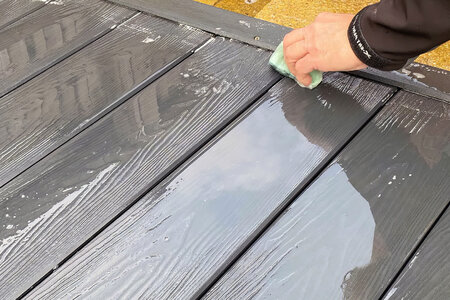
How To Clean And Maintain Composite Decking
Learn how to clean and maintain your composite decking with our guide. Follow our easy steps and tips for a brand new look. Contact Final Touch Carpentry and Constructions for expert help.
Read Full StoryWith growing climate concerns and bad weather prevalent throughout the country, it is essential to have a few tricks on your sleeve to protect your deck.
Building an outdoor deck requires a lot of planning and investment, so you’d want it to last a long time. However, various environmental factors can cause severe damage to the wood and construction of the deck, to the point where you might have to rebuild it. Besides, constant exposure to moisture can lead to mould growth - but you can prevent this by taking proper care of the deck and initiating frequent maintenance.
It can be pretty challenging to protect if you have a newly built composite or timber decking, given it’s your first time dealing with one. So, to help you with that, we have curated a list of ways you can safeguard decks from harsh weather. Read on.
Since you use your deck regularly, protecting it as you care for the garage, house, and shed is essential. Follow these steps to prevent mould and damage as much as possible without having to hire professional help:

Make it a habit to bring your outdoor deck furniture inside at the end of the day so the deck doesn’t have deep weathering spots during rain or storms. Think of it as when you place indoor furniture on your rug or carpet for a long time. In that case, you may find patchy spots, worn-out holes and accumulated dirt that is difficult to remove.
So, to prevent that from happening to composite decking, it’s best to clean your outdoor furniture and store it away in your garage or basement for the night. In addition, you should remove everything from your deck during storms and heat waves to prevent damage.

It’s impossible to prevent damage altogether, so you must be equipped with proper knowledge of dealing with different kinds of damage. For instance, you can look for common signs of deck damage, including mould spots, inflated wood from excess moisture, fading timber decking stains, cracks, loosened screws, etc.
The best time to address these issues is during spring or summer when the weather is relatively calmer. Also, don’t forget to check the stairs, board or railings for signs of damage, and take care of them quickly.

Putting potted plants away on your deck during storms is essential since very few plants can survive in an extreme environment. Additionally, the moisture-absorbing soil with its chemical fertilisers may damage the deck’s material if it seeps into it.

Mould can grow and thrive on timber decks for several reasons, including moisture, mildew, oxygen, constant sun exposure and hosts like food, fluids, textiles, etc., so you must try to prevent mould formation by properly maintaining and cleaning. However, you must address this issue early because if the spores become rooted to the decking outdoors, it may be challenging to treat them.
The best way to treat mould is to wash your deck thoroughly to remove build-up debris and mildew and then apply solutions to kill the spores. However, it is safer to avoid pressure washing as it can push the spore deeper into the timber decking.
Regarding treatment, it is no surprise that chemical solutions can be harsh on wood and unsafe for your family, especially if you have children playing on the deck. So, try using a gentler white vinegar-baking soda-water mixture, and add some tea tree or clove essential oil for anti-fungal properties.
If the deck is still slippery and covered in mould after treatment, you may opt for a mould remover to remove it from the material.

Constant exposure to sunlight can fade the natural wood stain of your decking, so frequently re-staining the deck can help maintain its original lustre. Staining becomes even more essential if recycled timber is used to build your decking.
After you’re done staining, remember to apply a water repellent- this way, water will roll off your deck instead of being absorbed into the deck. Even though this may lengthen the entire staining process, strengthening deck protection is an excellent way to prevent mould and accumulated mildew.
This is another way to protect your deck from the elements, as accumulated debris like leaves, twigs and even soil can get into the cracks and cause damage. To do this, use a leaf blower and quickly remove the dirt so it doesn’t get stuck to the boards.
You can also recycle leaves and other accumulated dirt from outdoors into compost. And a small pro-tip here: cover the deck with a plastic shed after staining it so that dirt and debris don’t get stuck on the stainer or oil.
Although our tips will help protect your deck from the elements, they may require more intricate repairs if the material has already been damaged. Such cases usually require you to hire a professional deck expert to fix the issue.
As such, you can contact Final Touch Carpentry & Construction, which specialises in home improvement and renovation projects in Sydney, including deck repairs and carpentry. We have a team of highly professional and licensed builders who can help with deck restoration, composite decking, revamping your deck flooring, minor repairs, cleaning, and deck removal.
Learn how to clean and maintain your composite decking with our guide. Follow our easy steps and tips for a brand new look. Contact Final Touch Carpentry and Constructions for expert help.
Read Full StoryLearn how to make your timber deck less slippery with our easy tips. Protect your loved ones from potential accidents with a safe and slip-resistant deck!
Read Full StoryWant to renovate your home without spending a fortune? We’ve put together a step-by-step guide to help you remodel your home on a budget!
Read Full Story

